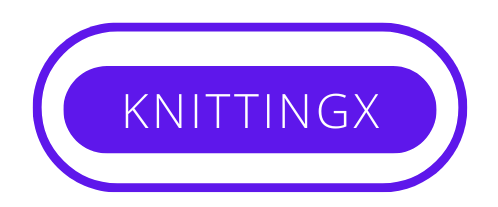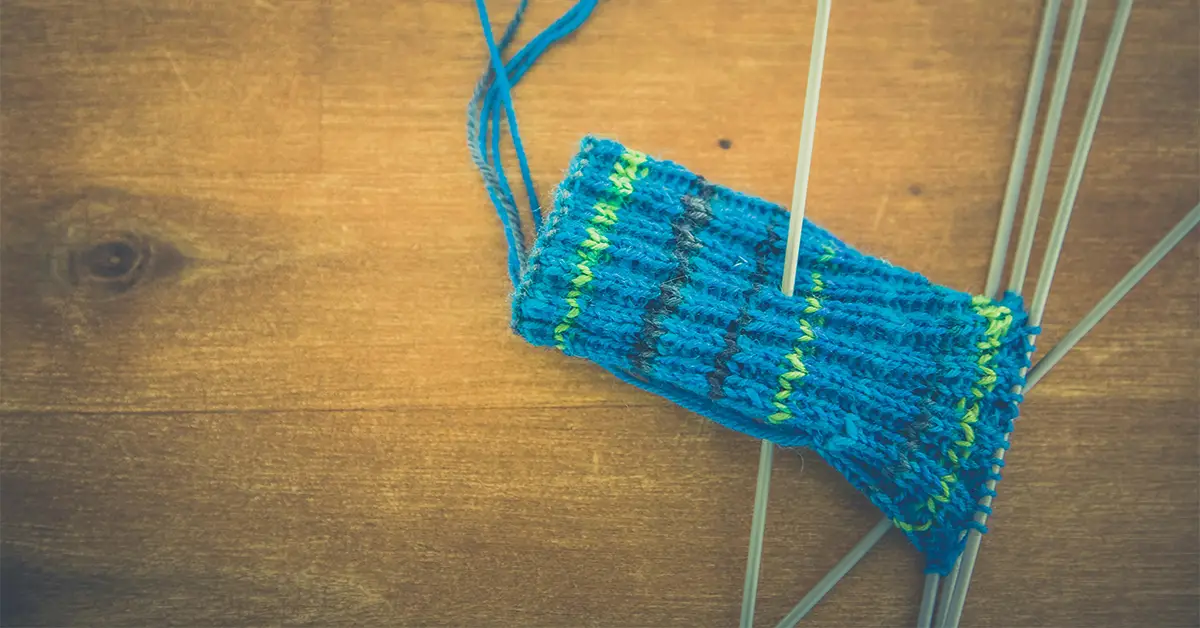No! As a matter of fact, knitting and weaving are two different fabric manufacturing techniques. None of the two crafts can replace the other. Weaving and knitting are two different crafts to make weaved and knitted fabrics. In modern times, both knitted and weaved fabrics have high demands in the market. The manufacturing process of the two crafts is different from one to the other.
In this article, we are going to look at the major differences between knitting and weaving, the advantages and disadvantages of the two crafts, and also the characteristics of both weaved and knitted fabric.
| Parameters | Woven Fabrics | Knitted Fabrics |
| Ironing | Woven fabric requires ironing from time to time, since the crease resistance is low | Knitted fabric for not necessarily needs to be ironed since crease resistance is high |
| Crease resistance | Low crease-resistance when compared to knitted fabric | Higher crease-resistance than woven fabric |
| Feel of the fabric | It is more rigid compared to knitted fabric | Knitted fabric has a soft feel |
| Fabric strength | Woven fabric is more stronger than knitted fabric | Not as strong as woven fabric |
| Air permeability | Air is less permeable in woven fabric | Air is more permeable in knitted fabric |
| Elasticity | Woven fabric has low elasticity qualities | Knitted fabric has high elasticity qualities |
Knitting
This is the process wherein yarn-or sometimes thread- is used to make fabric and other crafts. It involves intermeshing loops of yarn to make fabrics. In simple term, loops are created using one or more yarns in succeeding and preceding rows. The outcome is what is called knitted fabric and it is then used to make garments such as sweatshirts, gown, t-shirts, etc.
Knitted machines are used in commercial industries to manufacture fabrics of different types and sizes. These knitting machines use different types of needles to manufacture fabrics. However, most knitters use their hands to make knitted fabric structures.
The two main types of knits are the filling or weft knits-including double, pattern, plain, purl, and rib knits-and the warp knits-including Milanese, tricot, and raschel. Most filling knits can be created by machine or hand, although commercial fabrics are normally made with machines. Basic stitches are known as the knit stitch which is a loop enacted through the front of the preceding loop. The purl stitch is normally drawn through the back of the preceding loop. However, most filing knits are delicate because of the reliance of each on the stitch next to it (normally in a vertical row). But they have the greatest amount of stretch in the crosswise path.
The Plain knits, also known as flat knits, usually have flat surfaces, with small, straight loops noticeable on the back. When plain knits are done by hand knitting, the structure is normally called stockinette. The variation of the plain knit is used to create pile-surfaced fabrics such as fake furs and velour. The Rib knits are length ribs formed by wales interchanging on both sides of the fabric. These knots have good elasticity, but slightly heavy, and more sturdy than plain knits. The Purl knits are usually with horizontal ridges moving crosswise on both the back of the fabric and the face, making them not comparable. Pattern knits (like the fisherman knit sweaters) are created in a different manner in which the purl and knit stitches are used. Because the purl stitch tends to recede and the knit stitch advances, different numbers of patterns can be created by crossing, adding, alternating, or dropping stitches. Double knits are normally rigorous and heavy and rarely run. They can only be produced by a knitting machine, with a divergence of the rib stitch, using two sets of needles and two yarns from both directions
Weaving
Weaving is the most distinguished craft used to manufacture fabrics. Unlike knitting, It involves the interlacing of yarns to construct fine fabrics. Each yarn is called either a weft (horizontal) or a warp (vertical) and they are usually interlaced together at right angles to manufacture fabric structure. In natural words, weaving techniques is just like when you’re trying to make a mat. You know making a mat involves putting in different straw over the other perpendicularly. The outcome is what is called a woven fabric.
When you want to begin a weave project, it is important have more knowledge of fabric weaves. This is because when you select fabric for you weaving project, you should know that the kind of fabric weaves can define the tear strength, thickness, smoothness, durability,, drape, , and even comfort of the fabric. So, in short, the whole success of your dreams and hard work on weaving project depends on the weave of your fabric.
A fabric weave implies to the way weft and warp yarns are interlaced in a fabric structure. Mostly in fabric weaving, the thread (crosswise wefts and lengthwise warps) move in a criss-cross pattern, at just the right angle to the other. But in some other fabric weaving, weaving is done in so many fascinating patterns – decoratively and artistically. Some fabric factories can even produce high number of weave structures. But there are just three basic weave types that match and mix to create all other types – satin, plain, and twill weaves. They are either combine with one another or designed with fascinating variations to create other types of woven patterns.
The Comparison And Contrast Of Weaving And Knitting
Weaving VS. Knitting
Weaving involves the process whereby two types of threads or yarn are interlaced together to make woven fabric or cloth. The two types of yarn used normally run in varying directions, with the weft yarn running horizontally and the warp yarn running vertically. Knitting, on the other hand, is the process whereby yarn is made into kitten fabrics. In knitting, the loops of the material run together consecutively.
In weaving, the threads are always perpendicular an straight to each other; they run side by side. In knitting, the yarn follows a path to form well-proportioned loops under and over the yarn’s course. You can easily elongated these oblique loops from most directions, which makes the outcome fabric more elastic.
Weaving most end fabrics are usually stretchable in one direction, which means they have less elasticity when compared to fabrics formed from knitting. The yarn used in knitting craft are normally thicker than the threads used in weaving; knitted fabrics are normally heavier, while woven fabrics have more drape resulting from the usage of finer threads. In weaving, fabrics are made by interlacing two sets of threads at right angles to each other. Furthermore, woven fabrics can be done by machine or hand. The sequence of the raising and lowering of warp thread and the thread color determines the variety of woven products that can occur in different patterns.
Both woven and knitted fabrics have attained new heights in patterns and designs with the invention of computerized machines. In knitting, as each row is made, new loops are intermeshed through the subsisting loop. The needle holds the active stitches until new loops are intermeshed through them. Also, there are variations of needles and yarn that can be utilized, and they emerge in fabrics of different quality, textures, colors, and weight. To be honest, hard knitting has gone out of style since, but there are still fervent knitters who take knitting as a hobby. Most of the knitting practiced by hand knitters are circular knitting, felting, and flat knitting.
Weaving VS. Knitting In Summary
1. Weaving involves threads or yarn interlaced perpendicularly, while knitting involves the looping of rows of stitches parallel to each other.
2. Woven fabrics are much thinner and have more flow, while knitted fabrics are bulkier and elastic.
3. Weaving requires a heavier and bigger piece of equipment like the loom, while knitting involves smaller materials like knitting needles.
Knitting is popularly practiced as a social activity and a hobby more widely than weaving
Some Of The General Characteristics Of Knitted Products Are As Follows:
1. Knitted fabrics have innate elasticity
2. Knitted fabrics are generally resilient
3. They provide extraordinary drapability functions
4. They are easy to clean and maintain (require little or no ironing)
5. They move according to the body movement
6. They offer good insulating properties
7. Knitted fabrics have low crease retention
Some Examples Of Woven Products As Follows
1. Pique fabric
2. Single Jersey fabric
3. Terry fabric
Although there are many types of woven fabrics available on the market for diverse use, there are some general characteristics of woven products.
1. Woven fabrics are usually stable dimensionally in nature since the threads used are closely packed.
2. Because of the stated reason above, woven fabrics are less stretchable when compared to knitted fabrics.
3. They provide average drapability qualities when compared to knitting fabrics
4. They require ironing always and tend to crease
5. Pleat design can easily be made with woven fabrics since they tend to crease.
Some Examples Of Woven Products As Follows
1. Denim
2. Twill
3. Oxford
4. Chambray
Final Words
We’ve come to the end of this lengthy article, hope you enjoyed every bit of it. Knitting and weaving different crafts to make weaved and knitted fabrics. Like I said earlier, none of the two crafts can replace the other.

